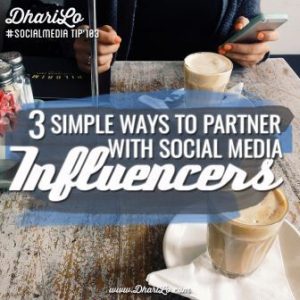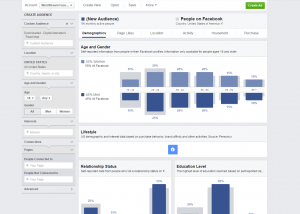Marketers and business leaders from global brands BuzzFeed, Sony and Telstra debated the future of social marketing and the value of online communities at the LiNC ‘14 conference in San Francisco this week.

The LiNC conference is an annual event hosted by Lithium, a provider of social networking tools for businesses. Brands at the event discussed online communities and developing their social media strategies.
Jonah Peretti, founder and chief executive of news and entertainment website BuzzFeed, delivered the keynote speech on the topic ‘how great content travels’.
This year’s event opened with revelations about how Lithium plans to use Klout, a website and app that rates people according to their influence on social media via their ‘Klout Score’, with marketers soon to be able to target influential social media users to support their campaigns.
1. Social is the new search
Peretti argued that “social is now even bigger than search” in terms of how people discover content. His company is growing rapidly through its ability to create highly sharable content, with 75 per cent of BuzzFeed’s traffic coming from social channels and 60 per cent on mobile. The site now receives 130 million unique monthly visitors.
“We reach as many people as CNN or MTV but without any of the traditional forms of broadcast media,” he said.
Peretti claimed that creating content with a strong emotional resonance for people is an important factor in whether they share it online. While some commentators have dismissed BuzzFeed as trivial for creating lists about animals or comedic topics, Peretti noted that many brands are adopting similar tactics as they discover what people like to share online.
“There’s so much humour on the social web because it makes people feel closer to other people they might not otherwise know,” he added.
BuzzFeed is currently working with about half of the 100 biggest brands in the US and is also growing quickly in the UK, where it opened an office last year. The company’s native advertising formula involves helping brands write sponsored posts that social media users want to share.
Peretti suggested that different marketing rules apply on the social web: sex doesn’t sell for example, “because people don’t want to share content if it makes them look sleazy”.
“Part of the reason you share things is because you’re telling the world who you are – so a better approach for marketers is to think how can I make this content smarter, more social and more inspiring. That’s what people want to share.”
2. The rise of ‘super fans’
Harnessing active members of online communities in order to help spread content is key. Sony Europe’s head of communities Nico Henderijckx, for example, explained that the company focuses on engaging with photography enthusiasts who are also active on social platforms in order to build interest in the annual Sony World Photography Awards.
The company created a forum for people to share their digital images and to comment and provide advice to other users. The forum, which runs across the Sony website and its social channels, features occasional calls to action from the company and a small amount of Sony content such as how-to videos.
The rest is given over to user-generated collaborations. By focusing on the user experience in this way, Sony aims to encourage online photography enthusiasts to bring their social media followers with them to the site.
“We don’t have an acquisition strategy as such in terms of bringing in new traffic,” said Henderijckx. “We focus on catering for the ‘super fans’ because we believe those people will go out there and spread the content.”
The forum received 35,000 photo uploads last year, helping to drive entries and interest in the awards. Although Sony can use the forum as an insight tool to help it cross-sell its equipment to users, Henderijckx said the main purpose is to drive quality engagement online.
“Although we do have soft KPIs (key performance indicators) around sales, our main KPIs are completely non-sales driven: engaged page views, how deep people go, the number of ‘super fans’ we have and the extent of our reach.”

Seventy five per cent of Buzzfeed’s traffic comes from social channels and 60 per cent is mobile
3. Be yourself in social
Monty Hamilton, director of digital operations at Australian telecoms firm Telstra, spoke about the important role that company culture has played in the brand’s “digital transformation”.
The company has revamped its website and launched a mobile app and live chat service in recent years, resulting in a dramatic shift in the proportion of customers that now use digital channels to engage with the brand.
This transition has involved trusting Telstra’s staff to speak in their own voice when dealing with customers on social media. “The last thing we want to do is change the way someone talks because it reduces the authenticity,” said Hamilton.
“Nobody wants the robotic IVR (interactive voice response) response that they get when they phone a particular service provider replayed in a digital channel. The context is key and we want our team members who are engaging in social to be who they are.”
Hamilton also claimed that Telstra has the second most engaged Yammer network in the world, with 32,000 of its workers using the employees’ social network.
This is further helping to change company culture with regards to digital technology and drive efficiencies in the business, he said. “In the same way that the customer’s use of digital communities has changed business forever, we’re using tools like this to accelerate our own internal activities.”
4. Control the conversation
Clemens Eckstein, ecommerce manager at online trading and investment platform Cortal Consors, part of BNP Paribas, noted that online communities and social media can also help brands to make their products and services more accessible to people.
This is particularly important in the financial services industry, where the market is often complex and consumer trust in brands is generally low.
To tackle this problem Cortal Consors set up an online community on its website earlier this year where people can ask questions and share advice with each other about their investments, as well as rate and review the company’s products and services.
According to Eckstein, this helps Cortal Consors to control the conversation around the brand and discourages investors from going to third party review sites to talk about it. Parent company BNP Paribas is taking a close interest in the project.
“Reviews are happening anyway, so if we put them on our platform we can make sure that we really know those customers,” he said. “It means the feedback we get is much more homogenous and we have the opportunity to turn unsatisfied customers into loyal ones because we can communicate directly with them.”

HSN shopping channel viewers will be able to buy make up and clothes from Disney movies
5. Technology and content converge
American shopping channel HSN is using online platforms to overhaul its proposition to consumers. The company began in the 1980s as a pioneer of televised shopping but has been forced to adapt to the rapid growth of digital channels in recent years. This has included putting online and mobile shopping at the heart of its business model.
“It’s a legacy business, and so the challenge is what will television become in three to five years?” said Bill Brand, chief marketing and business development officer at HSN. “That’s a key thing we’ll be looking at – modernising the TV experience. Personalisation is an area we’re investing heavily in right now because it’s something the consumer is now demanding and expecting.”
In addition to adapting to new technology, Brand argued that companies must differentiate themselves from online competitors through the quality of their content and storytelling.
One of HSN’s most recent innovations in this area has been a partnership with Disney whereby HSN users have opportunities to buy make-up and clothing worn in certain films, as well as access exclusive Disney content. The partnership began last year for the film Oz: The Great and Powerful and is running again this year for the new film Maleficent.
“Great retailers are media networks,” said Brand. “We have audiences and we have reach and if we pick the right partners we can generate an unbelievable amount of attention and community activity around our brand.”
(356)




